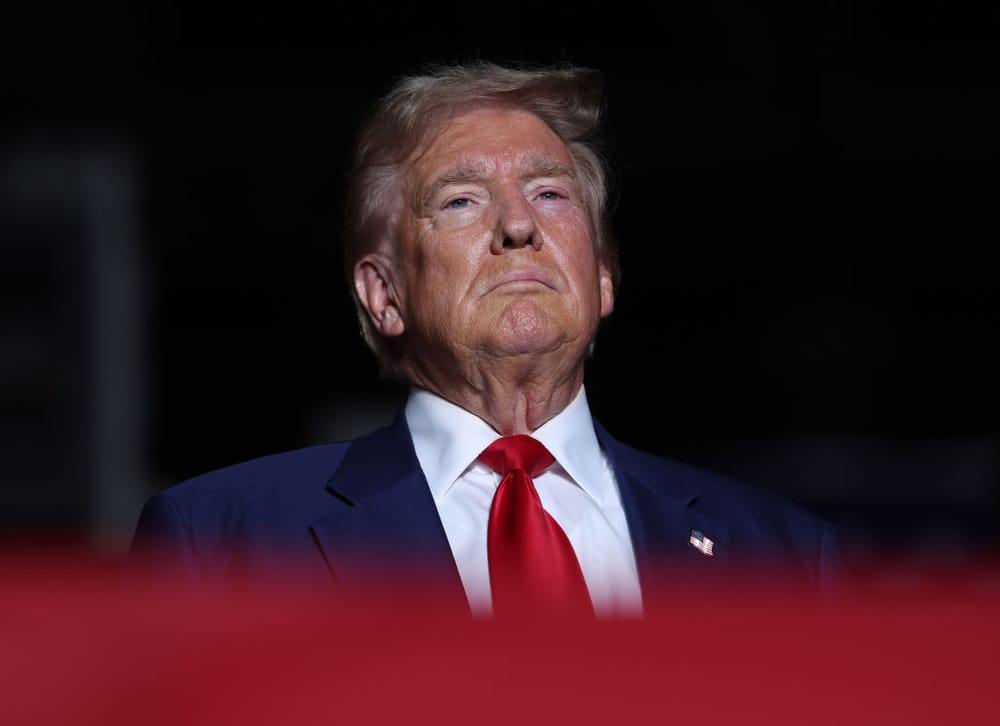Ever since Donald Trump launched his “Make America Great Again” slogan, I’ve been trying to figure out what timeframe he was referring to when he said “again.” In a recent rally in Las Vegas, Trump finally acknowledged he wanted to take America back to 1724, 300 years ago.
“Let’s go back another 300 years," said Trump. "We are going to liberate our country!”
I knew I had heard him mention “300 years,” but I couldn’t find the quote anywhere. Before coming across it, I listened to two full Trump speeches from this past weekend in California and Las Vegas (It’s always the last place you look).
So, what did the America Donald Trump desired to look like in 1724?
It wasn’t a country yet, coming 52 years before the Declaration of Independence in 1776. There weren’t even thirteen colonies yet. North and South Carolina were a single colony, Georgia would become the last of the 13 colonies, and Florida would be controlled by either Great Britain or Spain until 1821, when it became an American territory.
The term Manifest Destiny wouldn’t be created for another 100+ years, though westward expansion was already a thing. Three European nations were laying claim to various parts of the New World. Spanish missionaries and forts expanded into what would become Texas, New Mexico, Arizona, and California. France laid claim to the Louisiana Territory and much of Canada. Great Britain established colonies throughout the Northeast and South of Florida.
Trump claims America today is being sent criminals and people from insane asylums. The colonies in 1724 were a dumping ground for the worst criminals from European countries, plus those deemed insane. Britain was famous for sending its unwanted to Australia but also sent tens of thousands to America. After Scotland lost the Battle of Dunbar in 1650, many of the losers were sent to America, Carolina in particular.
You may have seen that play out in the Netflix series, Outlander. About 1,200 Jacobite prisoners that would now be considered terrorists were sent to America as indentured servants for terms running from 7 years to life.
Slavery was well-established in America by 1724, long before Jim Crow laws and the Black Codes that preceded them. Being white wasn’t even a thing in America fifty years earlier until Bacon’s Rebellion in 1676, when Black and white indentured servants, along with Black enslaved people, joined forces under Nathaniel Bacon to burn down Jamestown. The fear of all lower-class people uniting gripped the powers that be. Enslaved Black people became the predominant form of low-cost labor, and white indentured servants became a slightly higher class of overseers and workers. America established its own caste system, with Virginia establishing the first slave codes in 1705. These codes quickly spread to all the other colonies.
Florida was on its own track, Spain having brought the earliest slaves to America in 1526, well before the British brought slaves to Jamestown after that. Black people accompanied Ponce de Leon to Florida in 1513, and slaves were part of the settling of St. Augustine in 1565. The earliest slave revolt came in 1526. Slaves part of the Lucas Vázquez de Ayllón expedition that landed in “La Florida” escaped into the marshes. In the Spanish telling of this history, they presume Native Americans killed the escaped slaves. American history pretty much ignores this rebellion.
A dozen years before Trump thought America was great, South Carolina became its own colony. Charleston was the leading port in the nation for the import of African slaves. In 1704, with enslaved people on the verge of surpassing the number of white people, the first slave patrols were instituted. Service was generally mandatory unless you were wealthy enough to purchase an exemption. Perhaps bone spurs would be a good enough reason not to serve. Partus sequitur ventrem had been in place for 60 years, making the rape of slave women legal and declaring that the children of female slaves were slaves also.
Native Americans weren’t faring well, dying from diseases brought by Europeans, being slaughtered, and pushed West as settlers claimed their land. Treaties with white people proved meaningless, as Mexicans would later discover. It took over a hundred years before John C. Calhoun would proclaim in the US Senate that America was a white country. That sentiment was true in 1724 as well.
“I know further, sir, that we have never dreamt of incorporating into our Union any but the Caucasian race — the free white race,” said Calhoun.
The year Trump spoke of was only great for one group of people: Land-owning white men. Maybe that’s why Trump admired that era so much. Women couldn’t generally vote, and slaves made up more than 1/7th of the non-indigenous population yet had no rights. Labor was free, and women could be assaulted with little consequence. Living in 1724 may have been a living hell for the rest of us. But that doesn't concern Trump.
This post originally appeared on Medium and is edited and republished with author's permission. Read more of William Spivey's work on Medium. And if you dig his words, buy the man a coffee.
